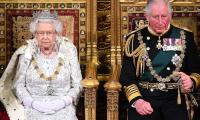In this series of columns we have been discussing some sources of a people’s history. We have talked about the writings of civil servants who work with a people’s perspective such as Tasneem Siddiqui.
We have highlighted the contributions of biographies of political workers such as Aslam Gurdaspuri; and we have also covered academics such as Dr Jaffar Ahmed who has penned his scholarly work with a clear perspective of the people. Now we come to a relatively uncommon aspect of people’s history that Dr Ghafer Shahzad introduced to me.
Dr Ghafer Shahzad is an architect, civil servant, and essayist; historian of architecture, poet, storywriter, and town planner. His literary pursuits deserve another column; here we confine ourselves to his contributions to our understanding of a people’s history by discussing the architecture and buildings that affect people’s lives and thoughts. I first came to read something from him around 20 years ago in the quarterly ‘Tareekh’ (history) edited by Dr Mubarak Ali. ‘Tareekh’ is a journal in Urdu contributing to the cause of a people’s history in Pakistan, but it has been facing a perpetual financial crisis.
The firs essay I read by Ghafer Shahzad was titled, ‘Baddaltey muashrati tanazur mein ghar ki hayyat’ (‘The home in a changing social perspective’) in the 12th issue of ‘Tareekh’ in 2002. In this 20-page article, he begins by discussing the features of a home with a people’s perspective: its civilizational importance, living styles, the interaction of culture and home, the impact of safety and seasonal considerations, and of course the aesthetic and creative dimensions. All this, he does with a special focus on Lahore. He tells us that if you excavate land in and around Lahore you are likely to find the remains of old homes.
Up until 60 feet below the surface, the excavation reveals buildings and homes from the British, Sikh and even the Mughal period. Dr Ghafer Shahzad quotes extensively from books and research studies conducted and written during the past century or so. PEPAC’s research titled ‘Walled City of Lahore’ and Kanhaiya Lal Hindi’s ‘History of Lahore’ (1884) are good sources of information. Similarly he cites H R Goulding’s ‘Old Lahore’ published in 1924 and the Urdu magazine ‘Naqoosh’s’ especial issue called the Lahore Number is an invaluable treasure trove of information about how the people lived and worked in Lahore.
Dr Ghafer Shahzad also lets us know about the people’s history with a particular reference to Waqf (endowment or trust). His article titled, ‘Islamic concept of Waqf and Pakistan’s Waqf Property Ordinance’ appeared in the 18th issue of ‘Tareekh’ in 2003. It describes the literal meanings of ‘waqf’ in Arabic language and goes on to explain its application in Pakistan which is mostly related to properties meant for welfare of the people. Such properties have a direct bearing on a large number of people who directly or indirectly associate with such endowments and trusts.
He discusses the evolution of endowment and trust properties which are mostly religious buildings. For example, he explains that most of the Muslim shrines and tombs in Punjab have remained sacred for Hindus and Sikhs alike. He narrates history from the Religious Endowment Act of 1863 when the British rulers formalized such endowments and trusts. Then there were the Charitable and Religious Trust Act 1920 and the Muslim Waqf Act of 1923. Hindus, Muslims and Sikhs all congregated, celebrated and observed anniversaries and festivals with a common heritage. From ‘Divali’ and ‘Dusehra’ to Urs and qawalis, the three religions made Punjab a cornucopia of colours and creeds.
His essay ‘Shrines and their architecture in Punjab’, appearing in the 20th issue of ‘Tareekh’ in 2004, dealt with the differences between ordinary graves and the extraordinary ones. He explains the peculiar styles of mausoleums, shrines and tombs, and the differences and similarities among them. He quotes from John A Subhan’s book ‘Sufism, its saints and shrines’ (1938) which had discussed the shrines of Bibi Pak Daman, Ali Hajveri, Ghazi Mian, who lived at various times from the seventh to eleventh centuries AD in Lahore and influence the people here.
Ghafer Shahzad continued this discussion in his article ‘Shrines: other motives behind their building and expansion’. A modified version of this paper was published in 2012 in the ‘Journal of Research in Architecture and Planning’ (Vol 12, 2012). The paper titled, ‘Informal and formal developments on the premises of Sufi shrines in Punjab’ makes use of illustrations, maps and tables to explain how such interventions have affected and have been affected by both the devotees and gaddi-nasheens (seat holders) in and around these shrines. The Auqaf department leads the formal interventions whereas the devotees and gaddi-nasheens intervene informally to serve their own interests.
In the 24th issue of ‘Tareekh’ (2005), Ghafer Shahzad discussed the relationship of architecture with nationalism. In the article titled ‘Nationalism and Architecture’, he categorizes historical building in two types: first as of a religious nature such as Badshahi Masjid and Masjid Wazir Khan, which establish a relation with our past; and second, the architecture rulers use to commemorate an event or a person. He gives examples of Minar-e-Pakistan and the Summit Minar to commemorate the Second Islamic Summit Meeting in 1974 in Lahore. Then the war memorials dedicated to the soldiers who sacrificed their lives.
Interestingly, in 1959 the Lahore municipal administrator presented a proposal to put up a memorial to commemorate the Pakistan Resolution. Initially it was supposed to be 64-feet high but then it was extended to 99 feet. The initial estimate was just 6.5 million rupees and the fund was collected by excise and taxation, and by imposing a Minar Tax on cinema tickets. With inadequate funds the construction was halted in 1962. When Nawab Kala Bagh became Punjab governor he cancelled the earlier design and ordered a new design that could be build within 1.4 million rupees.
Dr Ghafer Shahzad’s writings are full of such anecdotes that relate to people and their rulers; this all he presents with a clear perspective on a people’s history. For example, in the Silver Jubilee issue of ‘Tareekh’ (2005) he wrote ‘History, our historical assets and our attitudes’. In this article, he draws our attention to the fact that in our historical buildings people’s history has been neglected. “We read in our history that the number of steps in Badshahi Mosque is 22 but we don’t know the name of engineers who worked on it; neither do they teach us how many people toiled for how many days for this marvellous building.”
He also laments that we have consigned to oblivion the names of those master calligraphers who adorned the walls of Masjid Wazir Khan with Quranic verses. He gives credit to James Lockwood Kipling and J Burton, who in 1887 and 1903 respectively explained to us the value and worth Masjid Wazir Khan. There were tourists and artists who dilated upon the arts and crafts of used in these buildings in theory own way. It was Ghafer Shahzad who also introduced me to the writings of Raziuddin Aquil, a historian at Delhi University, whose books are all worth reading.
Raziuddin Aquil’s books such as ‘History in the Vernacular’ (2010), ‘Sufism and Society in Medieval India’ (2011) and ‘Sufism, Culture, and Politics: Afghans and Islam in Medieval North India’ (2012) are other good sources of history with a people’s perspective. In short, there are different ways of looking at a people’s history: it is not only in books but also spread in art and architecture. If Dr Mubarak Ali has taught me how to analyze historiography and history, Ghafer Shahzad has guided me how to look at buildings – both historical and modern, private and public – through the lens of a people’s perspective.
To be continued
The writer holds a PhD from the University of Birmingham, UK and works in Islamabad.
Email: mnazir1964@yahoo.co.uk
Amendment has become flashpoint in struggle between parliamentary supremacy and judicial independence
Some of us may have experienced General Zia’s martial law in the 80s; it was a dark period in our history
Power capacity trap, rising tariffs, and unsustainable circular debt continue to plague sector
Article 16 of the FCTC explicitly mandates measures to restrict youth access to tobacco products
Astrologically, both Donald Trump and Kamala Harris are strong personalities
In mindless bid to boost exports to China, Pakistan failed to differentiate between commodities and value-added goods







